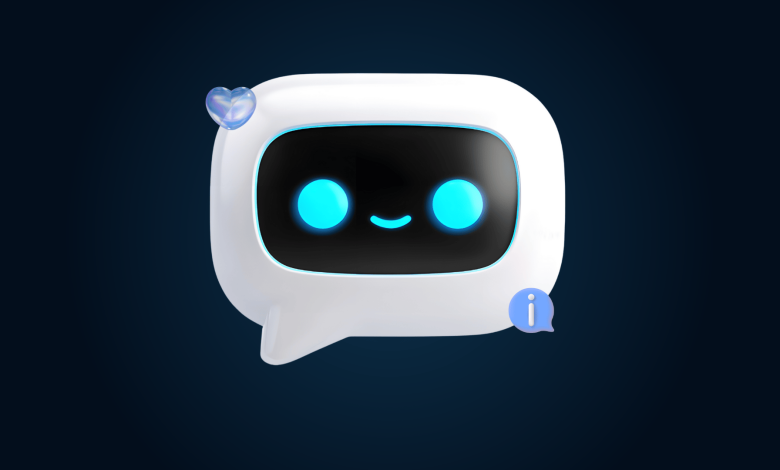
You’ve probably chatted with a brand recently — maybe while tracking an order, checking a subscription, or just browsing a website. The responses came fast, polite, and surprisingly natural. Then something subtle happened: it felt personal. The tone matched yours. The conversation flowed. It didn’t sound like a script — it felt like a someone.
That moment wasn’t coincidence. It was personality by design.
As AI shifts from backend automation to front-line interaction, the way a brand’s chatbot talks is becoming part of its identity. Every word choice, pause, and phrasing now carries emotional weight, shaping how people feel about the brand behind the screen. Because people don’t connect with code; they connect with character.
This isn’t about faking humanity — it’s about translating it.
This article explores how brands can design AI personalities that feel genuinely human, not by pretending to have emotions, but by understanding them. From tone and timing to storytelling and self-awareness, these subtle choices are redefining what it means for AI to “speak brand.”
From Scripts to Souls: The Shift in AI Communication
Once upon a time, chatbots were purely functional. They existed to handle transactions and FAQs, not to charm or comfort. But today, conversation design has evolved into AI language design — shaping not just what bots say, but how they say it.
Brands like Duolingo are creating personality-driven interfaces. Duolingo’s “Lily” persona — an eye-rolling, emo AI with a distinct teenage flair, has become the company’s second most popular character, showing how humor and personality can strengthen user engagement.
Meanwhile, Replika positions itself as an “empathetic AI friend,” designed to evolve through adaptive, emotionally attuned conversations. Users report that over time, Replika begins to “understand” them — not through genuine feeling, but through intelligent tone calibration.
Even basic customer chats now influence brand emotion and trust. The question isn’t just “Did the AI solve the problem?” but “How did it make the user feel while solving it?”
The Psychology of Connection
Here’s where things get fascinating. Our brains process tone before we even comprehend words. According to neuroscientist Dr. Lisa Feldman Barrett, the brain’s emotional center — the amygdala, activates within milliseconds of hearing or reading tone, triggering emotional expectations before we’ve processed meaning.
That’s why AI phrasing matters so much. Even a small change in tone — a “Hey, no worries!” instead of “Please try again” — can shift the entire emotional temperature of a conversation.
We respond to language the same way we respond to people — by feeling seen or dismissed.
Emotionally intelligent chatbot design doesn’t need to mimic humans. It just needs to respect human rhythm — matching tone, pacing, and empathy with intention.
Designing Personality: Where Creativity Meets UX
Creating an AI personality isn’t about adding jokes or emojis. It’s about defining a character system — a consistent, context-aware identity that reflects the brand’s emotional tone.
This starts with AI character profiles:
- Name: Optional, but useful internally to define tone.
- Traits: Warm, witty, calm, or confident?
- Boundaries: How casual is too casual? When does empathy replace efficiency?
Then comes tone calibration — setting emotional ranges based on user context.
Example:
User: “It’s taking forever!”
Bot A: “Please wait.”
Bot B: “Ugh, I know! We’re on it — promise it’ll be worth it.”
The second reply feels alive — not because it “feels,” but because it mirrors human conversational rhythm.
And that brings us to some practical creative strategies 👇
Strategies for Designing Human-Centered AI
Strategy #1: Tone Tuning — Mirror, Don’t Mimic
Idea: Chatbots adapt their tone (formal vs friendly) to match user vibe.
Why it works: Mirroring creates subconscious rapport and comfort — a principle rooted in social psychology.
Creative spin: Introduce “tone sliders” — adjustable friendliness or confidence levels, allowing AI to adapt dynamically to emotional context.
Example: A user types casually → chatbot replies playfully but respectfully.
Strategy #2: The Language Loop — Familiar Phrases, Familiar Feelings
Idea: Give the AI micro-catchphrases that reflect brand tone (“Let’s make this simple!” “No stress — we got you!”).
Why it works: Linguistic repetition = emotional branding.
Psychology: People recall brands faster through verbal cues than visuals.
Tip: Keep them light, natural, and true to the brand — never robotic or forced.
Strategy #3: Emotionally-Aware Timing
Idea: Teach AI when to respond, not just what to say.
Why it works: Humans sense empathy through rhythm and pacing.
Studies show that even a 1.5-second delay before an empathetic response increases perceived authenticity — it feels like the bot “paused to think.”
Creative spin: Use micro-delays before comfort or reassurance phrases to simulate thoughtful timing.
Strategy #4: Story Snippets Over Script Dumps
Idea: Make responses micro-narratives (“Here’s how another customer solved that too!”).
Why it works: Stories are memory triggers — people remember narratives, not data.
Benefit: Keeps interactions conversational, not transactional.
Tip: Limit stories to 1–2 lines max — “relatable, not rehearsed.”
Strategy #5: Subtle Self-Awareness
Idea: Add gentle acknowledgment lines like, “I might not have emotions, but I understand how frustrating that can be.”
Why it works: Small self-aware statements humanize AI without crossing into the uncanny valley.
Tie it to trust psychology: Transparent systems feel more authentic and trustworthy.
Warning: Overdo it, and it breaks the illusion of natural conversation.
Ethics & Authenticity: The Line Between Relatable and Manipulative
As AI grows more emotionally intelligent, the line between connection and manipulation blurs.
The EU AI Act now classifies emotion-recognition and emotionally aware bots as “high-risk”, requiring brands to inform users when their emotions are being analyzed — protecting autonomy and decision-making rights.
For ethical AI design, transparency isn’t optional — it’s trust currency. A chatbot doesn’t need to pretend to care; it just needs to show it understands what care means in context.
Authenticity in AI isn’t about feeling. It’s about fairness.
The Future: Character as Brand Identity
Tomorrow’s brands won’t just have taglines — they’ll have characters.
AI exposure is already positively linked to brand trust and purchase decisions, especially among Gen Z, who expect their digital interactions to “feel human.” Soon, a brand’s chatbot voice could become as recognizable as its logo — shaped by tone, rhythm, and emotional intelligence.
Imagine opening a chat with your favorite company and recognizing its personality — not from a logo or tagline, but from the way it talks to you.
Conclusion: The Heart in the Machine
AI can’t feel emotion — but it can be designed to understand why we do.
Every interaction becomes an opportunity to reflect human-centered empathy — not through imitation, but through intention. Because when technology learns to listen, not just respond, connection becomes the new intelligence.



